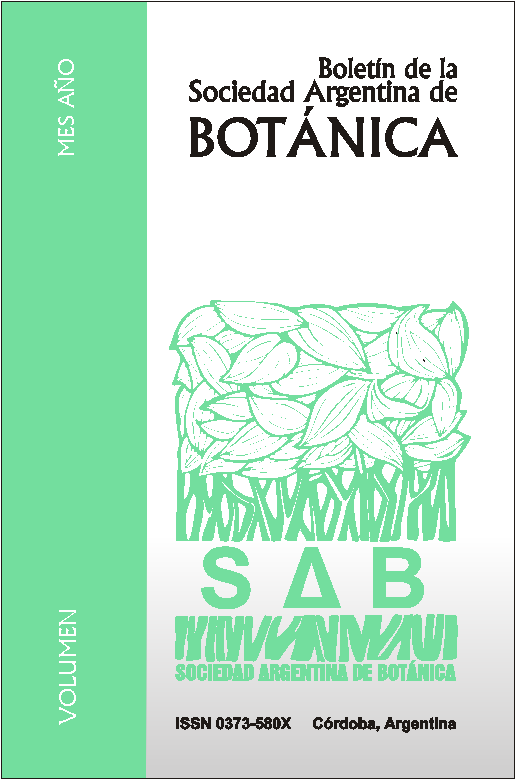Traditional agriculture and the richness of maize (Zea mays). a case study in Caspala, Jujuy province, Argentina
DOI:
https://doi.org/10.31055/1851.2372.v48.n3-4.7623Keywords:
Landraces, ethnobotany, transhumance.Abstract
Traditional agriculture and the richness of maize (Zea mays). A case study in Caspala, Jujuy province, Argentina. In Caspalá traditional corn landraces, and more recent ones, are cultivated. The current richness is the result of use, assessment, and management of this resource. This assessment is, in turn, associated with family decisions that reflect their culture, tradition and worldview. In this paper we analyze the richness of currently grown corn in Caspalá, the changes occurred in recent years, the use of the produce and management of agricultural land available. Semistructured interviews were conducted at 37 (51%) families in the community. 23 ethnotaxa were reported (15 currently grown and 8 remembered), with an average of 6.61 maize ethnotaxa cultivated by family. The uses of each ethnotaxon, the growing in different microenvironments and the provenance of the “seeds”, were identified as factors that positively influence the richness of corn crop. It was also found that the abandonment of transhumance, the decline of agriculture in different altitudes and the incorporation of foreign food products contributing to the decline of such richness. The results found warn about the importance of Caspalá, in the preserving of local maize, and the need to take steps for preserving existing richness.
Downloads
Issue
Section
License
Provides immediate and free OPEN ACCESS to its content under the principle of making research freely available to the public, which fosters a greater exchange of global knowledge, allowing authors to maintain their copyright without restrictions.
Material published in Bol. Soc. Argent. Bot. is distributed under a Creative Commons Attribution-NonCommercial-ShareAlike 4.0 International license.





